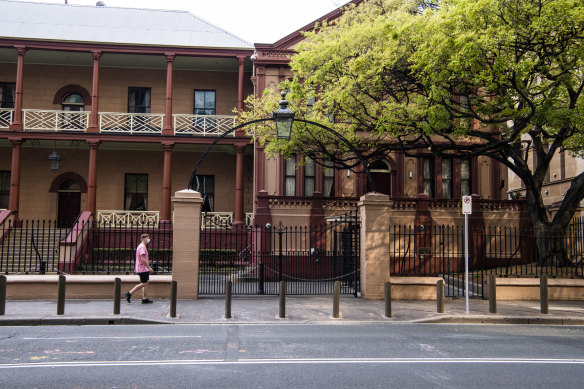It was more than a century ago that the then all-male NSW parliament first became known as the Bear Pit. So aggressive and unruly was the behavior of MPs on the floor of parliament in the early 1900s that the lower house could have been a blood-sport arena hosting bear-baiting.
Disturbingly, little has changed in Macquarie Street. The Bear Pit nickname remains and so does a toxic culture.

NSW Parliament House is the country’s oldest parliament.Credit:louise kennerley
The first woman was elected to Australia’s oldest parliament in 1925, but still it has not shaken its moniker. Perhaps it is little wonder, then, that the bad behavior that has long been tolerated in the chamber has spilled outside into the halls of power.
Former sex discrimination commissioner Elizabeth Broderick’s long-awaited report into the workplace culture in NSW parliament is a shocking indictment on the people who seek to represent us and the institution where laws are made.
NSW parliament is still a male-dominated workplace, where sexual harassment is rife and people are fearful to speak up in case they lose their job, Broderick says. Three men and two women disclosed to her de ella review their experiences of attempted or actual assault and almost half of sexual harassment incidents in the past five years were carried out by elected members of parliament.
A series of anonymous first-person accounts makes for uncomfortable reading. One described the parliamentary precinct as feeling “like the 1970s”, with “old rich white men employing these beautiful young women in their 20s. People would come to the office and joke ‘[this member] always employs the lookers’ ”.
loading
Another said: “MPs make lewd comments, especially at drinks. It’s a bit of a boys’ club, there’s sexting in the Parliament.” And this: “It’s a completely predatory environment. People use their position to influence and manipulate young adults to get what they want. It’s the nature of the relationship in those offices, I saw it happen in my office.”
Broderick’s report, which was based on the response of almost 500 people, found that most people who took part identified the “unequal distribution of power”. Women are still grossly underrepresented.
